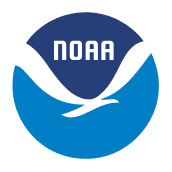GSD modelers support 2019 In-Cloud ICing and Large drop Experiment (ICICLE)
GSD modelers have created a 1km High-Resolution Rapid Refresh (HRRR) nest over the Great Lakes region this winter to support the FAA-led In-Cloud ICing and Large drop Experiment (ICICLE) project from January through March 2019. The ICICLE field campaign will collect atmospheric data from airborne and ground-based sensors to better understand lake-effect snow processes and how icing conditions form and evolve. Researchers are specifically studying how supercooled liquid water environments, including freezing rain and freezing drizzle, form and evolve at flight levels. GSD’s numerical modeling tasks focus on identifying the advantages and disadvantages of 1-km grid spacing versus the current 3-km grid, how to optimize the physics in the HRRR model to run at 1-km, testing methods to improve forecasts of cloud development, icing conditions, and the location and type of precipitation at the surface.
This work supports the FAA with national-scale products that diagnose and forecast aircraft icing at the surface in the terminal areas and aloft en-route to reduce the rate of aircraft icing-related accidents and fatalities.
For more information contact: Susan Cobb 303-497-5093
Our Mission
Lead research and directed development through the transition of environmental data, models, products, tools, and services to support commerce, protect life and property, and promote a scientifically literate public.
Research Areas
Organizational Excellence, Earth System Prediction, Advanced Technologies, and Decision Support are the foundation to achieving the GSL Grand Challenge: Deliver actionable global storm-scale prediction and environmental information through advanced technologies to serve society.
Global Systems Laboratory

